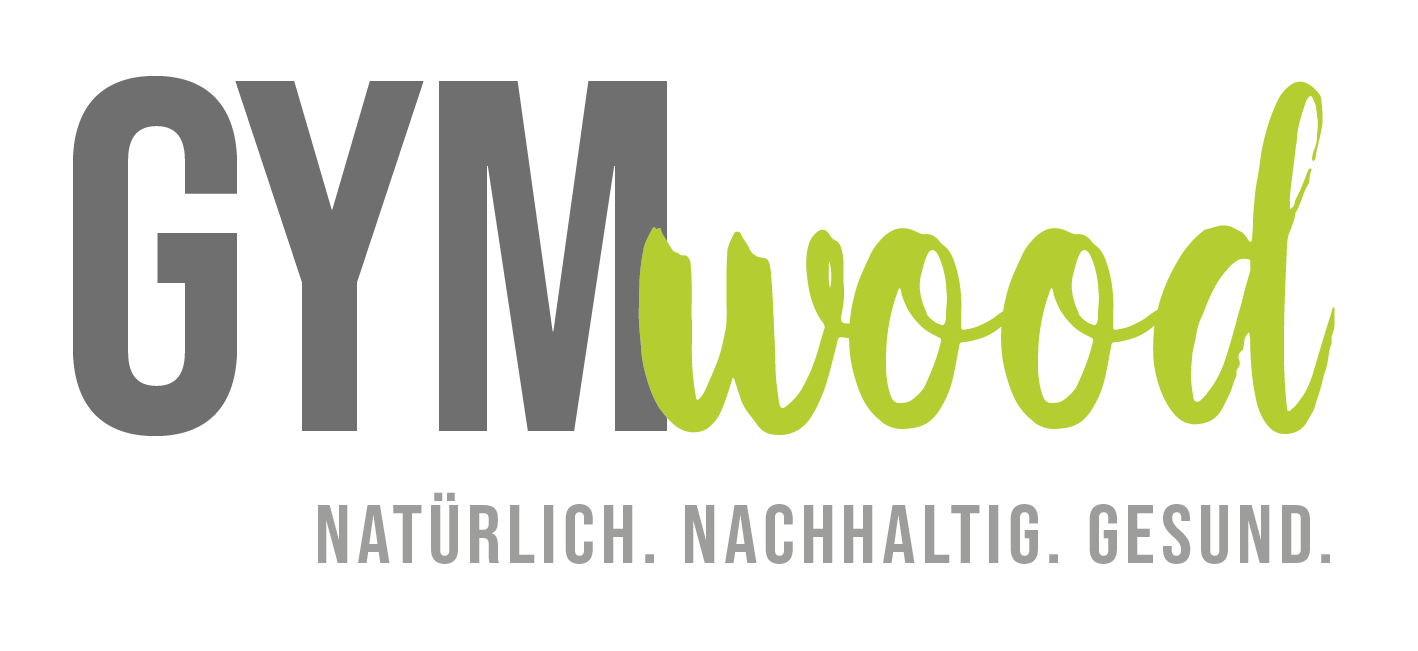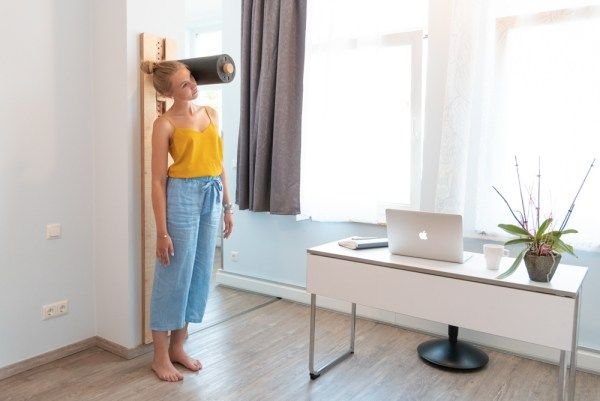
GYMboard
The GYMboard from GYMwood is a multifunctional training device made of wood that can be used specifically for muscle relaxation and regeneration - whether in the gym, in physiotherapy, in the office or at home. Developed for use in workplace health promotion (WHP) and workplace health management (WHM), the GYMboard offers numerous training and relaxation options in the smallest of spaces.
Integrated trigger hooks can be used to release tension and treat myofascial trigger points. The functional design made of high-quality wood makes the GYMboard not only an efficient training device, but also a stylish element in any room.
Whether as a wall-mounted solution or free-standing - the multifunctional wooden training device is easy to use, space-saving to integrate and versatile to improve mobility and well-being.
Here's how
NECK & NECK
-
Sternocleidomastoid muscles
Suboccipital muscles
Levator scapulae
Trapezius
Scaleni muscles -
LWS
-
Ventral and dorsal muscle chain
-
Adjust the roller so that the center of the cushion is at
Height of the tip of the nose
- Knees stretched, shoulders remain lowered
- Buttocks and back with as much contact to the wall as possible
- Look straight ahead, head is only tilted to the side without rotation
- Upper body remains against the back wall
-
Move the pelvis to the side and keep tension in the neck muscles.
Hips & BACK BEND
-
Psoas Major
Quadriceps Femoris
Rectus Abdominis
Diaphragm -
Knee | Hip | Spine
-
Ventral muscle chain
-
- Knees hip-width, supporting surface on the middle of the buttocks
- One leg positioned in hip line in front of body
- Both knees bent 90 degrees
- Head in extension of the spine, chin slightly retracted Pelvis remains erect throughout the exercise Palms facing each other
-
Lean upper body as far back as possible and keep tension in the front chain.
ESSENTIAL
-
Pectoralis Major & Minor
Psoas Major
Rectus Abdominis
Latissimus Dorsi
Diaphragm -
BWS I neck problems
-
Ventral muscle chain
-
- Middle part of the pad at the level of the angulus inferior (TH9), lower part at the junction of psoas and diaphragm (TH12 & L1).
- Knees hip-width, feet flat on the mat
- Head in extension of the spine, chin slightly retracted
-
Bring extended arms as far as possible behind the pad by extending the thoracic spine and maintain muscle tension in the anterior chain.
PREPARATION
-
Gastrocnemius
Soleus
Ischiocrural musculature
Musculature of the foot -
Knee I lumbar spine I thoracic spine
-
Dorsal muscle chain
-
- Knees extended
- Toes grip the wedge
- Hips are perpendicular over the foot
- Place the upper body as far forward as possible
- Pelvis remains tilted forward
- Head in extension of the spine, chin slightly retracted -
Pull heels down as far as possible and hold the tension.
CHEST & BACK TILT
-
Latissimus Dorsi
Obliquus Internus Abdominis
Obliquus Externus Abdominis
Quadratus Lumborum -
Neck | Spine
-
Lateral muscle chain
-
- Middle part of the pad at the level of the angulus inferior (TH9), lower part at the junction of psoas and diaphragm (TH12 & L1).
- Knees hip-width, feet flat on the mat
- Head in extension of the spine, chin slightly retracted
-
Bring extended arms as far as possible behind the pad by extending the thoracic spine and maintain muscle tension in the anterior chain.
tIME
-
Adductor group of the hip joint
Latissimus Dorsi
Obliquus Internus AbdominisObliquus Externus Abdominis
Quadratus Lumborum -
Knee I Hip I Spine
-
Ventral muscle chain
-
- Knees hip width, feet lie flat
- Push pelvis diagonally forward upward
- Band is pulled in an upright position, with tilt of the upper body backwards the arms are slowly extended forward
- Head in extension of the spine, chin slightly retracted
- Pelvic uprightness must be permanently ensured
-
Lean upper body as far and straight back as possible, pivot point is at knee joint.
tRIGGER & MASSAGE ELEMENTS
-
Ischiocrural muscles
Gastrocnemius
Soleus
Psoas major -
Knee I Hip I Spine
-
Dorsal muscle chainDorsal muscle chain
-
- Place foot on slide in hip position
- Push the pelvis forward evenly to create tension on the hip flexors
- Front leg is stretched, heel presses into the pad, toes are pulled up
- Upper body remains straight
- Arms only secure against tipping to the side
- Avoid external rotation of the front foot
-
With your pelvis straight, push your front foot as far forward as possible and maintain tension.











